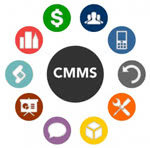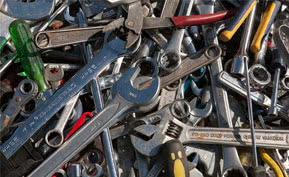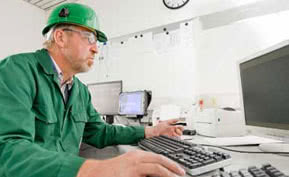CMMS
5 Signs You're Ready for a CMMS

In a world where virtual assets often capture more of our attention than the infrastructure and machines that surround us, it can be easy to forget the importance of the buildings, vehicles, and other parts of the built environment that enable us to develop the products and services that we love and depend upon. Despite that architecture, and by association its maintenance, were among the first innovations of early civilization, the need for dedicated facilities management was not officially recognized in the modern era until the early 1980s.
As the International Facility Management Association explains, “[facilities management] was truly a reactive profession then, replete with on-the-job training, trial and error, and success by happenstance.” Enter the facility management industry and its associated software, computerized maintenance management systems (CMMS). Though facilities management is still a loosely defined combination of administration, planning, space management, security, and utilities management, there are nonetheless clear signs that your company is ready to implement a CMMS.
Work Order Management
No matter the number of facilities you manage, your industry, or the number of people you have on staff, keeping track of work orders is a daily necessity for all facility managers. Self-made solutions to this need are often ad-hoc, lack a clear hierarchy, and are a far cry from real-time when it comes to response times and employee awareness. Though your company’s work orders might not be as urgent as those of the Health and Hospital Corporation, who used eMaint’s CMMS to improve response times to work orders in a network of 17 healthcare facilities, it doesn’t mean that your company wouldn’t benefit from the greater oversight, intuitive priority-based ticketing system, and automatic time and expense tracking that CMMS software can provide.
High Energy Costs
As managers everywhere often say: “If the lights are on, we’re spending money.” Auditing your facilities’ energy consumption is one of the easiest ways to reduce your company’s monthly operating expenditure. This is easier said than done, however, since heating, cooling, and lighting each require unique routine maintenance. With a CMMS in place, all of your regulatory systems can be monitored from a single interface for greater control. This in turn means faster alerts and even further savings in repairing equipment before it fails. Ultimately, the goal of achieving operational harmony between all of your energy-consuming systems is to, “create a workplace environment that allows building occupants to concentrate on their essential business, rather than being distracted by the work environment.”
Compliance Management
Depending on your industry, the difficulty of remaining compliant with your local and federal regulations can be as easy as annually updating documentation or as hard as providing proof of inspection for hundreds or thousands of assets. CMMS systems not only allow for automatic notification when document renewal or preventative maintenance is needed, but can help you save time and money by keeping track of each asset’s maintenance record by utilization. This means less time spent performing maintenance on lightly used assets and lower failure rates across all equipment types.
Asset Management
One of the most common pain points for facilities managers is that by the time all of the company’s buildings and assets have been properly audited and documented, the space or equipment has already changed and the process must begin again. In the case of Bayer Health Care Pharmaceuticals, their team was struggling to keep up with constant facility adjustments and venue changes until they implemented FM:Systems’ CMMS. With advanced visibility into all aspects of asset management, Bayer is able to instantly provide accurate information about their facilities which not only helps with compliance, but gives the company a clear picture of how they can improve operational efficiency. Furthermore, web-based asset management solutions enable employees to facilitate the movement and exchange of assets immediately instead of relying on sporadically updated records.
Employee Happiness
You might think that employee happiness is the only non-financial reason to adopt a CMMS on this list, but in reality it’s among the most important factors in whether a company achieves financial success. As facilities management has grown over the past decades, its responsibilities have transformed from simple building maintenance to providing an appealing, comforting, and inspiring workplace environment. To return to the International Facility Management Association’s definition, “It is the role of a facility manager to ensure the proper operational of all aspects of a building to create a healthy, safe, and cost-effective environment in which all occupants can function.” By implementing a CMMS to provide oversight and reduce the need for manual auditing, facility managers can focus on improving the human aspects of the workplace to improve employee satisfaction and public perception.
Ready to find the best CMMS solution for your company? Browse product reviews and top blog content on the asset management resource center page. To compare leading CMMS software by pricing and key features, download the free Top 10 CMMS Software report.






